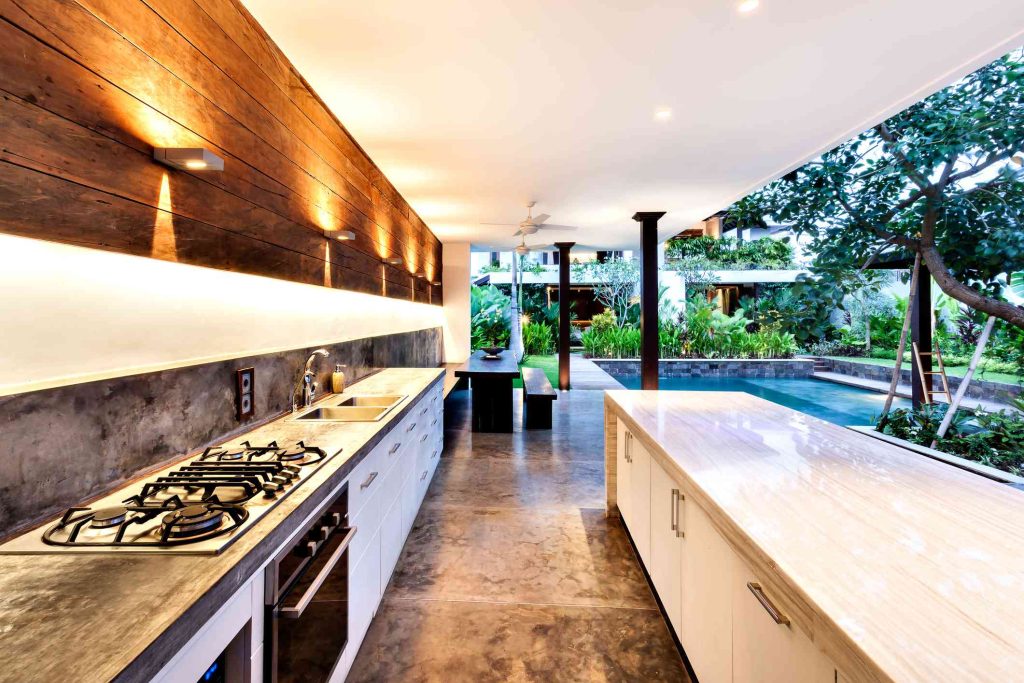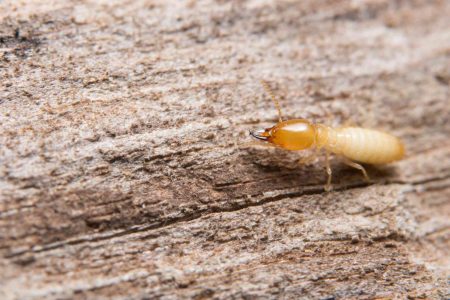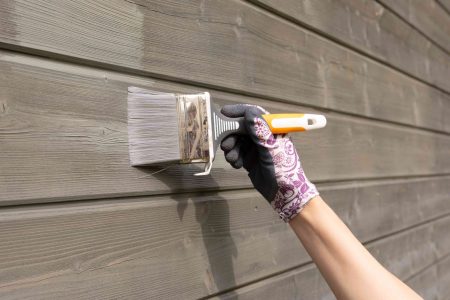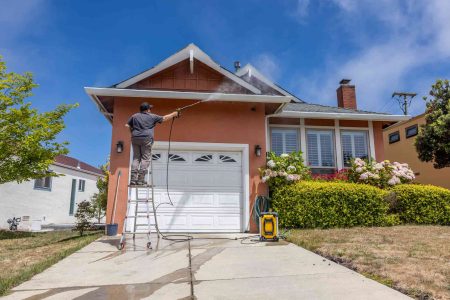One of the most frequently used parts of an outdoor cooking setup is the outdoor kitchen countertop. This surface is mainly used for food preparation, like slicing vegetables or making burgers, before moving the ingredients to the grill or stovetop for cooking. Outdoor kitchen countertops also provide more space for dishes, utensils, condiments, and more.
The frequency of use, proximity to food, and location outdoors should be taken into consideration when you are deciding between types of outdoor kitchen countertop materials. Some options are best for covered outdoor kitchens, while others can stand up to the sun, rain, and changing temperatures without concern. Use this guide to learn more about the types of outdoor kitchen countertop to find the right option for your home.
-
01
of 10Granite
Best for: Strength, heat-resistance, durability, and sun exposure.
Selecting granite for an outdoor kitchen countertop is an excellent option because it is strong, durable, and resistant to UV radiation, allowing the materials to hold up in outdoor conditions. It comes in a variety of colors, patterns, and styles, and granite is resistant to heat, making it ideal for a busy outdoor kitchen.
However, it’s important to regularly seal the granite because this countertop material is porous. If the granite is not sealed, bacteria, mold, and moisture can seep into the granite, shortening the life of the countertop. As long as you are willing to seal the countertop about once every two to three years, then granite is a great choice.
-
02
of 10Quartzite
Best for: UV-resistance, low maintenance, and overall strength.
Quartzite is a natural stone option that is often confused with the engineered stone known as quartz. However, it’s important to know the difference between these two materials when you are selecting an outdoor kitchen countertop to avoid making a mistake.
Quartz is great for indoor kitchen countertops, but it is vulnerable to UV radiations, leading to significant fading when it is exposed to direct sunlight. Quartzite does not share this limitation and is actually known for having high UV-resistance.
When compared to similar natural stone materials, like granite, quartzite is often considered the best option because it is a relatively low maintenance material that is both strong and durable. It can handle heat and moisture, though it’s important to seal the quartzite countertop about once every two to three years to protect the porous material from mold, mildew, and moisture.
-
03
of 10Concrete
Best for: Custom construction, color variety, durability, and heat-resistance.
To get a custom countertop for the outdoor kitchen, concrete is a great option that can be poured to meet your exact specifications. The concrete can also be mixed with a range of colors and tints to create a unique look that cannot be found with most other outdoor kitchen countertop materials.
Concrete is a tough, durable material that is well-suited for the outdoors. It’s heat-resistant and can hold up well under the sun and rain, though it’s important to seal the concrete regularly to prevent moisture from seeping into the porous material.
An option that has been gaining popularity is to coat the concrete with epoxy resin. The concrete countertop provides the strength and durability, while the epoxy resin coating can protect the countertop from UV radiation, rain, snow, ice, and stains.
-
04
of 10Tile
Best for: Warm climates, affordability, and aesthetic variety.
Tile isn’t just for the bathroom—it can also be used to make an affordable outdoor kitchen countertop. The main benefit of this material is that tile is relatively inexpensive when compared to other outdoor kitchen countertop materials. Tiles are available in a wide range of colors, shapes, patterns, and styles, so you can be sure that you will find a suitable option to meet your aesthetic tastes.
However, tiles are not a great choice for cold climates because they can crack when exposed to freezing temperatures. Additionally, you will need to keep in mind that the grout lines on the tile countertop are difficult to clean, and they tend to attract dirt, stains, and grime. If you opt for a tile countertop for your outdoor kitchen, consider using black or dark gray grout to help hide any stains.
Continue to 5 of 10 below. -
05
of 10Stainless Steel
Best for: Durability, anti-bacterial protection, and low maintenance.
Often used in commercial kitchens, stainless steel kitchen countertops are heavy-duty options that are relatively easy to keep clean. The steel construction is nonporous, so you don’t need to worry about mold, bacteria, or staining. However, like most metals, stainless steel is vulnerable to rusting and corrosion when it’s exposed to moisture.
Additionally, stainless steel will heat up significantly under the sun, so to keep the countertop cool and safe from rain, stainless steel countertops are best for covered outdoor kitchen areas. As long as the countertop is properly protected, the stainless steel will last for years without any issues.
Just keep in mind that the sleek steel appearance is prone to scratches and dents, so take care when you are working on the stainless steel surface.
-
06
of 10Soapstone
Best for: Stain-resistance, heat-resistance, and moisture-resistance.
Soapstone is a highly attractive option for an outdoor kitchen countertop. This is because soapstone is a dense, nonporous material that doesn’t need to be sealed against mold, staining, or bacteria. Soapstone is easy to clean with soap and water, making regular maintenance simple to keep up with.
To give the soapstone a dark shine, apply mineral oil to the countertop. Just make sure to use cutting boards to protect the soapstone against abrasive damage. Soapstone can also withstand high temperatures, making it ideal for a kitchen environment, though it’s important to mention that it can heat up under the sun, so you need to use caution when working on the countertop if the outdoor kitchen is not sheltered from direct sunlight.
-
07
of 10Bluestone
Best for: Durability, strength, heat-resistance, and natural aesthetic appeal.
Bluestone is an option that has recently become popular for outdoor construction. It comes in a range of blue-gray colors, shades, and tints, and you can also choose to install polished or unpolished bluestone for modern or rustic aesthetics.
Bluestone is a tough, durable material that will last for years, though similar to other natural stone products, bluestone does need to be sealed about once every two to three years to protect it from mold, staining, and moisture. This material holds up well under the sun and it is resistant to heat, so you don’t need to worry if you accidentally put a pot down on the countertop. However, it’s important to mention that natural stone products cannot be reinforced, so the countertop is at risk of cracking or splitting if it is not level and properly supported.
-
08
of 10Marble
Best for: UV-resistance, visual appeal, and durability.
Marble makes for an attractive natural stone countertop to complete an indoor or an outdoor kitchen. It comes in a variety of colors and patterns, with unique marble veins running through the material to give your kitchen a custom visual appeal.
This material is strong and durable, with a high resistance to UV radiation. It is also heat resistant, allowing it to withstand high temperatures that are common in a food preparation environment.
However, the marble will need to be regularly sealed about once every two to three years to protect it from stains, mold, bacteria, and moisture. Though, if you leave the marble unprotected, you can allow the marble to age naturally for a rustic appearance as the rain washes out any staining and blends etch marks into a unique pattern.
Continue to 9 of 10 below. -
09
of 10Glass
Best for: Anti-bacterial protection, moisture-resistance, and low maintenance.
An excellent way to ensure that your outdoor kitchen is easy to clean is to install a glass countertop. While most people may initially opt for a more durable option, it’s important to keep in mind that when glass is suitably thick, it is an incredibly strong material that won’t have a problem holding up in your outdoor kitchen.
Additionally, glass is a nonporous material that is resistant to moisture, bacteria, staining, UV radiation, and heat. However, this low maintenance countertop material can still be damaged by acidic food and drinks, so it’s necessary to clean up spills quickly.
When it comes to customization, glass is one of the best choices because it can come in a variety of colors, textures, styles, and designs. You can embed shells or small stones in the glass or set up LED backlighting for a truly unique appearance.
-
10
of 10Limestone
Best for: Durability, strength, heat-resistance, and natural aesthetic appeal.
As a natural stone material, limestone is tough, durable, and heat-resistant, allowing it to function well in a food preparation environment. Limestone comes in a range of patterns and styles, often with unique veining and mineral deposits that give each product a custom natural aesthetic appeal.
Like other natural stone products, limestone countertops will need to be sealed about once every two to three years to protect the material from mold, mildew, bacterial growth, and moisture. If the countertop is not properly sealed, limestone becomes highly susceptible to staining, so it’s important to stay on top of this semi-regular maintenance task.
How to Choose an Outdoor Kitchen Countertop
When it comes time to decide on the right outdoor kitchen countertop material for your home, take into consideration the location, proximity to food, and the natural resistances of the material. If you like the idea of having a stainless steel countertop, make sure that it is properly protected from the sun and rain. If you prefer to keep your outdoor kitchen uncovered, consider investing in a natural stone product, like granite or quartzite. Just make sure that they are regularly sealed against moisture and staining.
For busy outdoor kitchens, keep in mind that mold, mildew, and moisture can seep into porous materials. It may be better to invest in a nonporous option, like glass, to make it easier to clean and sanitize the kitchen before and after every meal. If cost is the primary factor, then tiles can be a good choice, though they are not well-suited to cold climates.
Ultimately, the best type of outdoor kitchen countertop depends on your outdoor kitchen setup, environmental resistances, maintenance requirements, cost, and personal preference. Weigh these factors to select the right outdoor kitchen countertop material for your home.
-
Is quartzite or granite better for outdoors?
In most categories, quartzite and granite are relatively equal, including lifespan, durability, and porosity. However, quartzite countertops tend to have better resistance to long-term sun exposure and the tiny quartz crystals glimmer in the sunlight, adding a purely aesthetic advantage over granite.
-
Can laminate countertops be used outside?
The short answer is no, don’t use laminate countertops outside. Laminate is made with particleboard, which is prone to mold, mildew, warping, swelling, and rot. While a laminate countertop may last for more than a decade without problem indoors, it is likely that you will need to replace the countertop within a few months if you choose to install it outdoors.
-
What type of countertop is best for an outdoor kitchen?
The best options for an outdoor kitchen countertop are natural stone, concrete, or tile. These materials hold up well in outdoor conditions, though it’s still important to protect the kitchen as best as possible to keep the outdoor kitchen and any appliances in good condition for years to come.
Read the full article here














